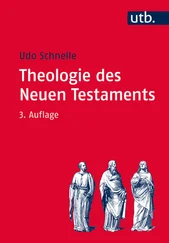3.35 David A. Hyman agrees, he writes:
… in every generation, philosophers, ethicists, religious figures, politicians, and professional worrywarts have cited human dignity as a reason to restrict innovation or prohibit it outright. Consider a few examples. Galileo was forced to recant his heliocentric views because the Roman Catholic Church had already embraced the Ptolemaic system as more consistent with Biblical revelation and with man's dignity as God's creation. Indoor plumbing, the printing press, skyscrapers, the suburbs, automobiles, television, the Sony Walkman™, and the franchise for women were all met with the objection that they were inconsistent with human dignity. The Industrial Revolution, which laid the foundation for the modern world, was criticized because machines were expected to destroy human dignity.
(Hyman 2003)
3.36 In the medical context, human dignity continues to hold a prominent place. The World Medical Association's Declaration of Geneva 53 demands that doctors treat their patients with ‘compassion and respect for human dignity’. Oliver Sensen points out that human dignity, today forms the moral ground of human rights in UN documents. For instance, in the 1948 Universal Declaration of Human Rights , human rights are grounded in ‘the recognition of the inherent dignity […] of all members of the human family.’ Sensen sees a problem in the UN approach on this issue. He writes:
[i]n documents like these [UN declarations, covenants] key terms are deliberately kept vague, since one can only secure an agreement among so many parties at the price of a certain ambiguity. If one were to specify the meaning and grounding force of human dignity, it might be at odds with some parties' deeply entrenched opinions and beliefs. In this case the whole project might fail. Accordingly, there is no explicit attempt to clarify or justify human dignity in these documents.
(Sensen 2011)
3.37 Another example of this phenomenon, in the field of bioethics, is the UNESCO Declaration on Bioethics and Human Rights 54 . It uses human dignity to ground the substantive policy guidance contained in the Declaration. David Benatar, a South African philosopher, agrees with Sensen's argument on the popularity of vague language in this dignity‐centered declaration. He is suspicious that it is being used by the drafters of this document ‘to gloss over disagreement’, which is achieved by them choosing words ‘that are sufficiently vague that each person can interpret them consistently with his or her own views’ (Benatar 2005). Unfortunately, just as is the case more generally, there is no consensus among experts on what the moral basis of human dignity is, if any, and what its specific meaning in the health care context should be taken to be.
3.38 In bioethical discourse dignity often means one thing and its opposite. Unsurprisingly, given its vagueness, human dignity is deployed in ethical, political, and even legal contexts in support of diametrically opposing points of view. For instance, both proponents as well as opponents of assisted dying deploy the human dignity trope for their respective ends. The rhetorical tool of human dignity pervades many public policy debates and it is present in many other spheres of social life. Authors often use it to cloak potentially controversial moral considerations in the language of dignity.
3.39 When you come across dignity arguments in bioethics, always investigate whether there is anything substantive to it, or whether it is no more than a pleasant‐sounding word deployed to shame you into agreeing with a particular point of view. We are not suggesting here that it is impossible to create a coherent theory of human dignity, but today it is fair to say that there is no consensus on either the moral basis of human dignity, or its meaning, or its scope.
3.9 Nazi Arguments in Bioethics
3.40 Nazi arguments are not arguments that Nazis necessarily have defended or put forward. Nazi arguments in bioethics, but not just in bioethics, are primarily deployed to end a particular debate or argument. After all, if a point of view is analogous to something the Nazis did or propagated, it is highly likely that there is a serious flaw in it. Equally, if a particular course of action would lead us down a slippery slope toward something akin to the crimes the Nazis committed, we would also have good reason to not seriously consider that course of action. The utilitarian Peter Singer, an influential secular Jewish philosopher, was accused of promoting points of view that were supposedly both analogous to views propagated by the Nazis, and that would lead societies adopting those views down slippery slopes toward Nazi style atrocities (Schöne‐Seifert 1991; Wright 2000).
3.41 Walter Wright describes both the argument from analogy as well as the slippery slope argument. Singer, as you will discover in greater detail in Chapter 5on beginning of life issues, holds a number of highly controversial views resulting in him defending as moral the killing of certain severely disabled newborns. Significantly, he used language in this context that was identical to the language used by the Nazis.
3.42 In a nutshell Singer holds the view that newborns are not persons, because at birth and for a few weeks after they do not have the intellectual capacities to qualify as such. He also thinks that, by virtue of their disability, some newborns will never reach personhood, even in later life. Only persons have a right to life, so newborns would then not have a right to life. Singer the utilitarian aims to maximize the reduction of the overall amount of suffering in the world and to maximize the overall amount of happiness in the world. He argues in his bestselling book Practical Ethics that some disabled newborns suffer irreversibly a quality of life that is so miserable ‘as not to be worth living, from the internal perspective of a being who will lead that life’ (Singer 2011, 162). There he said it, a life not worth living. Singer thinks that parents of such severely disabled newborns should be permitted to make the choice to have their lives terminated. The troubling thing, for Singer, is that in the 1920s two influential German academics, the leading legal scholar Karl Binding and the medical school professor Alfred Hoche published a book in which they argued for the destruction of lives not worth living (Hoch and Binding 1920). They were not Nazis, and they were arguably driven to some extent by compassion. For instance, they insisted that those lives not worth living should only be terminated if, as Wright quotes them, their life ending ‘must be experienced as a release, at least by the victim; otherwise allowing it is self‐evidently ruled out’ (Wright 2000, 180–181).
3.43 The Nazis, of course, had other ideas when it came to euthanasia and the destruction of human lives they did not consider worth living, and their ideas were quite different from those of the German academics, and they were certainly not analogous to Singer’s views. The Nazis liked Binding and Hoche’s terminology; in fact, ‘life not worth living’ was used extensively by the Nazis and their propaganda machine. It is fair to say that the Nazis did use pretty much the same vocabulary Singer uses. However, that is where the analogy ends. Their so‐called ‘euthanasia’ program was eventually directed at people who experienced pretty much any kind of mental illness, were homosexuals, drug users, or simply homeless. What occurred was plainly and simply the murder of people who would have considered their lives very much worth living. This then isn’t analogous to the case Singer makes in his argument.
3.44 Unsurprisingly perhaps, when Singer was invited by German academics to lecture on this topic, disability rights and other activists protested and succeeded for some time in their efforts aimed at preventing Singer from speaking at German universities. As far as these activists were concerned, Singer propagated views that were analogous to what the Nazis did (Schöne‐Seifert 1991). In reality, while Singer’s views were and are controversial, as you have seen, the Nazi analogy is flawed. It was deployed on this occasion to end any further debate on Singer’s views with regard to the morality of infanticide involving the termination of the lives of certain severely disabled newborns.
Читать дальше












